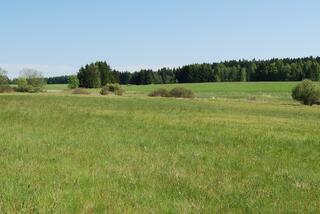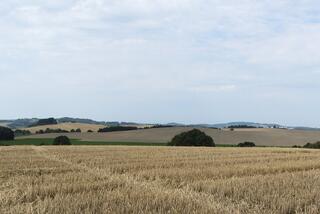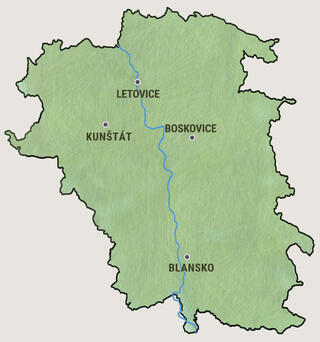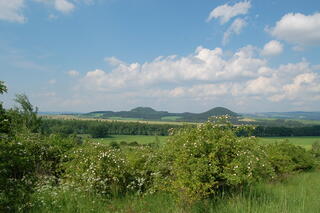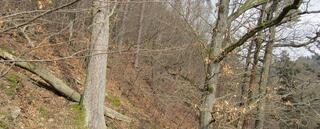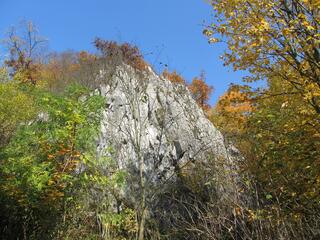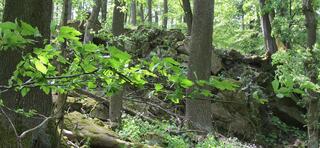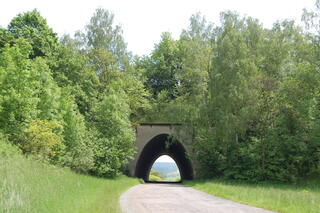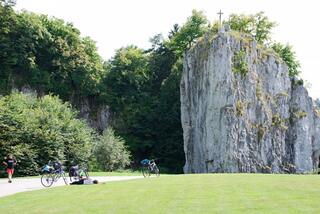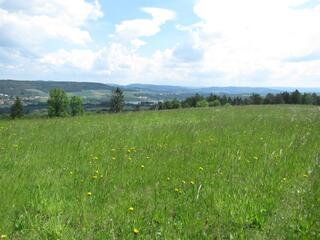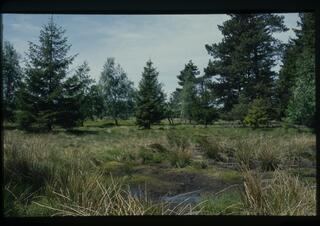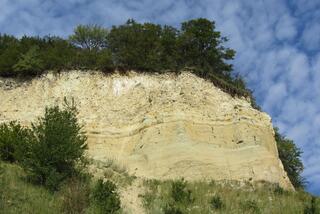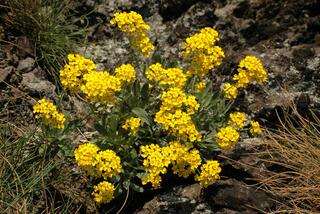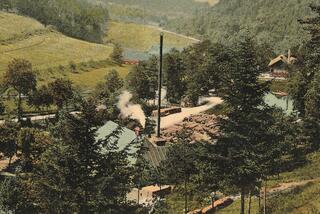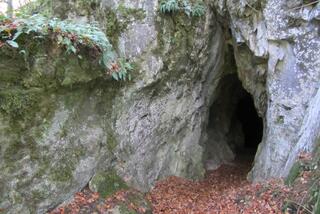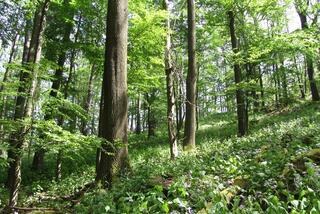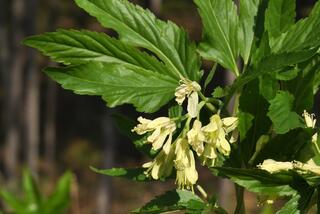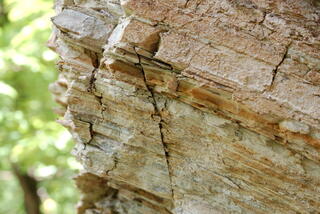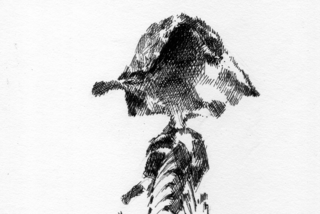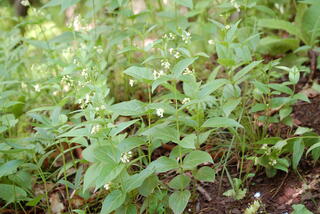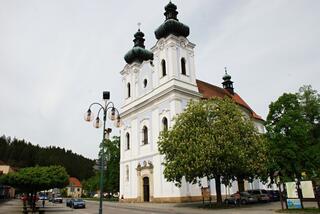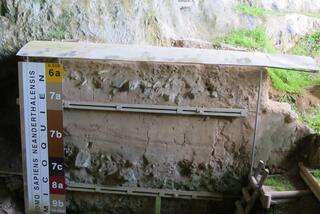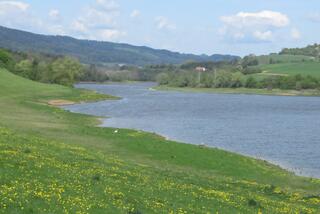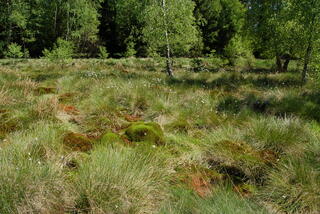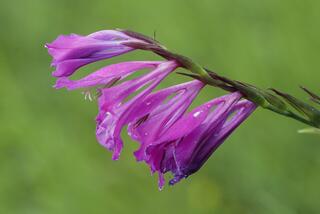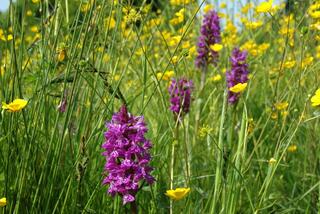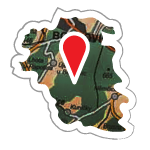
Boskovice region – map
Boskovice region
This region represents a border part of South Moravia, for which varied geology, rugged ground and mixture of thermophilic and montane fauna and flora are typical. Altitude is between 300 meters above sea level (the valley of the Svitava River between Lhota Rapotina and Doubravice nad Svitavou) and 721 meters above sea level (the hill called Paprč near Kořenec). Other high hills are close to a little town Olešnice, for example, Kopaniny – 688 meters above sea level.
A map of the Boskovice region
Malý Chlum Hill and Velký Chlum Hill (= Little Chlum and High Chlum) are two hills that are considered to be residues of beds of a prehistoric sea. It used to be a strategic point in the landscape and so it is no wonder there was built a prehistoric hillfort. Nowadays, it is an important locality od thermophilic flowers.
The Pilské valley is one of the most beautiful valleys near Boskovice and it was created by the small river Bělá. For many centuries, there used to be a lot of manufacturing facilities driven by water. Fragments of mixed forests are situated on hillsides above Bělá. Those forests are sparse and low and somewhere, they have almost character of virgin forest. Definitely, it is not “true” forest but it is enough so that there can live many species that are closely connected with virgin forests. We can mention as an example Limoniscus violaceus; a beetle, which needs old dead trees not to be sawed down.
The Vratíkovský Karst is a strange area with character of a tropical conical karst near Vratíkov, a small village about 3 km from Boskovice. It was created at the turn of the Mesozoic era and the Tertiary when the climate was tropical - holt and wet. The Sklep Cave is an important archaeological and paleontological locality where bones of a bear, a reindeer and instruments of prehistoric hunters were found. This area is protected by the state.
The valley of Hodonínka is a designation of a complex of almost virgin forests (beechwoods or wood of brash) surrounding a small river called Hodonínka. The significance of this is that it is a part of Natura 2000 which unites the most important nature reserves in Europe. In the bottom part of the valley, we can find rocks deformed by freeze accompanied by stone seas.
Bačov – a world-famous locality for palaeontologists because there have been found fossils of Palaeozoic amphibians (genus Discosauriscus). Some of them you can see in our exposition, specifically in the bigger showcase with a magnifying glass. They lived near drying lakes surrounded by almost desert where ancient conifers grew. Because of the hot and dry weather, processes connected with precipitation of iron happened in soil. And that is the reason why the local soil is red. Those amphibians were researched by the famous palaeontologist Josef Augusta, a native of Boskovice. Nowadays, this locality is protected and thermophilic flowers can be found there.
Sloup is considered to be a “gate” into The Moravian Karst (in Czech – Moravský Kras), which used to be called Moravian Switzerland, during the 19th century. It is also famous because of the miracle statue of Virgin Mary, placed in the local church. During pilgrimages, there were stands where were sold not only pictures of saints but also teeth of prehistoric bears that were believed to be teeth of dragons. Teeth and bones of prehistoric animals used to be found in caves by local people. Sloupsko-šošůvské Caves are known as caves of bears because a lot of their bones were found there. The reason for it is the fact that female bears bred there and if spring thaw was too soon, a flooding would killed them.
South of the small town Sloup there are several rocks that gave the town its name. In Czech, “Sloup” can mean also rock.
In the locality so-called The Old Rocks, The Sloupský brook disappears because it changes into an underground brook. There is the beginning of the longest cave complex in central Europe – so-call Amatérská Cave (Amateurs Cave).
The Křetínská basin is distinguished by sloping terrain and infertile soil. Those facts caused that we are still able to see in the landscape residues of medieval use of this area, for example, terraces overgrown with trees or bushes. It is interesting that mountain ridge is asymmetrical – one slope is gentle and the second one is steep.
Pavlovské wetlands are without doubts one of the most valued areas near the Boskovice region. They are located in the Drahanská highlands where wetlands used to be numerous. During the second half of the 20th century, most of them were destroyed because of people´s effort to drain them and gain more fertile land. Also, the biggest peat bog of the Drahanská highlands was there with the depth of peat 2 metres. Unfortunately, peat was mined and the area heavily destroyed. Nowadays, only two localities are preserved. Many protected species of flora and fauna live there. It is good news that some species which were considered to be exterminated was found again, for example, sundews (Drosera rotundifolia). Unfortunately, many species were definitely exterminated there, for example, a fern Ophioglossum or Sedum villosum.
Eriophorum vaginatum, the hare's-tail cottongrass, tussock cottongrass, or sheathed cottonsedge, is a species which is quite plentiful in this area. The spike-like flower is located at the top of the stem and looks like a tuft due to its white hair.
A peat moss gave the birth and the name to peat bogs. Peat mosses have no roots and when they die they create peat.
Talking about nutrients, peat bogs are very poor and it is no wonder some plants try to help themselves. Sundews enrich themselves by catching and “eating” insects. They stick an insect down with small drops that are on their leaves and those drops also digest insects.
Sloup - St. Mary the Virgin's Church
Source: https://www.mestyssloup.cz/turista/turisticke-cile/kostel-panny-marie-b…
Sloup is famous because of the miracle statue of Virgin Mary, placed in the local church.

